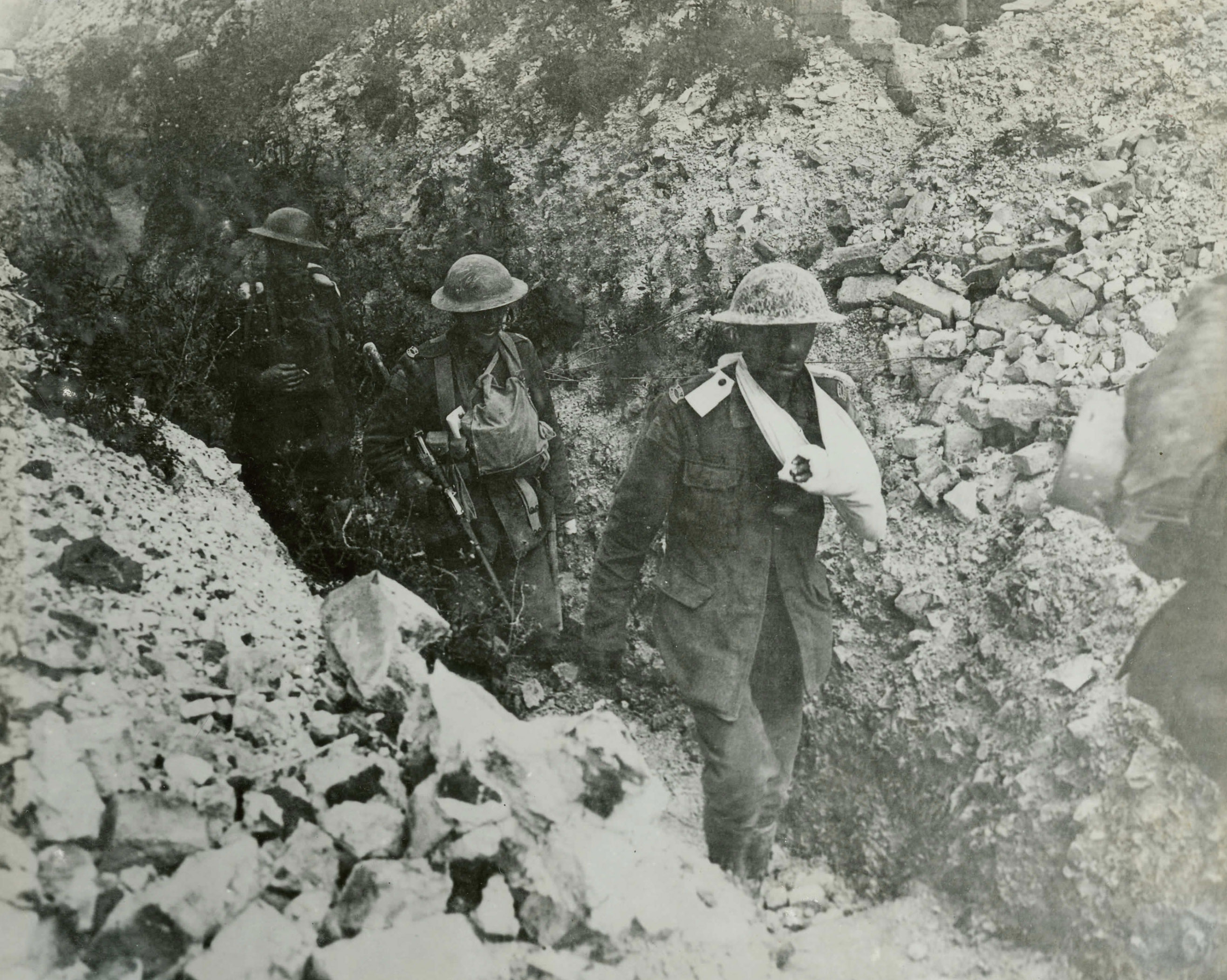
The Canadian Corps had learned a lot since their first raid in 1915, and by 1917, were the acknowledged masters of the art. Trench raids were a key component in preparation for the coming assault on Vimy Ridge.
A massive raid involving 860 specially trained troops was planned for mid-January 1917 on the German trenches near Calonne, France, northwest of Vimy Ridge.
“Men chosen for the raid spent a period of time out on aggressive patrols into no man’s land to familiarize themselves with the terrain,” wrote Andrew B. Godefroy in Canadian Military History. Such knowledge allowed Canadian engineers to develop a full-scale model of the German trench system, used for training the five companies tasked with the raid.
The training would mean fewer surprises, and every soldier would know exactly where he was to go and what was expected and be “better able to carry on should his superiors become casualties,” said Godefroy.
Scouts identified enemy wire in no man’s land, which was targeted by Allied mortar fire at the end of December and scouted again to confirm the damage.
Companies were well equipped for the raid with rifle grenades, canvas to throw over wire and ladders for bridging trenches. Platoons had riflemen, Lewis gunners, bombers and stretcher-bearers and a pair of engineers with charges to wreck dugouts, machine-gun nests and mortar sites. Sappers carried bombs for destroying trenches and dugouts and smoke bombs for concealment.
The Germans had also learned a lot since the first trench raids. They had a web of defence consisting of machine guns, sharpshooters and special mortar platoons, all supporting one another.
“Canadians had learned to unravel the German defensive web by breaking it apart one piece at a time,” writes Godefroy, collapsing defences and creating a gap through which Canadian troops could manoeuvre with their flanks covered by machine guns and artillery.
On Jan. 17, the Canadians waited for the Germans, on alert for dawn attacks, to let down their guard, then attacked at 7:45 a.m., concealed by a smoke screen, with a diversionary mine to the north drawing enemy fire, the Germans unable to see where the real attack was coming.
Canadian raiders raced across no man’s land, killed and wounded dozens of enemy, captured more than 100 prisoners, wrecked machine-gun nests and mortar emplacements, collapsed trenches and returned, at a cost of 40 dead and 135 wounded.
The Calonne raid “was almost flawless in its planning and preparation, and near textbook in its execution and resulting effect,” wrote Godefroy. The raids continued all along the Canadian front before Vimy Ridge, honing the troops’ initiative and flexibility and commanders’ battle plans, ultimately helping to turn the stalemate at the trenches into open, mobile warfare.
Advertisement










